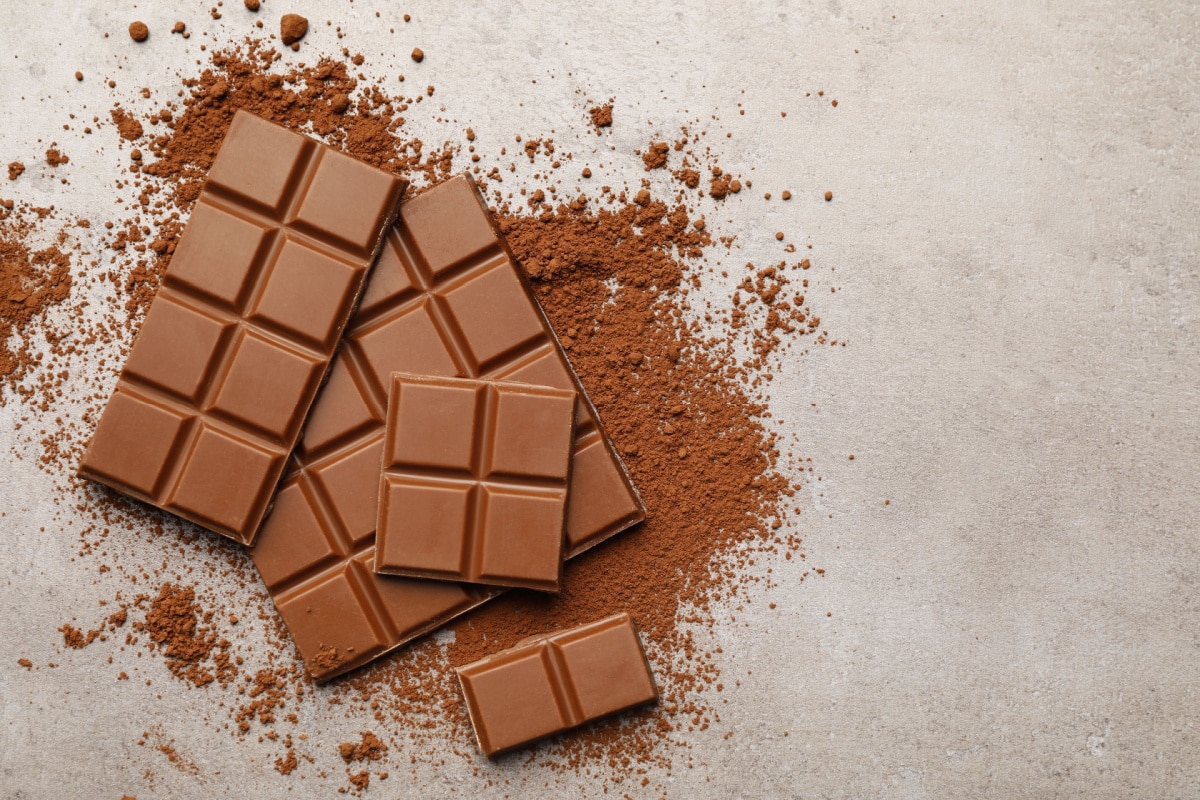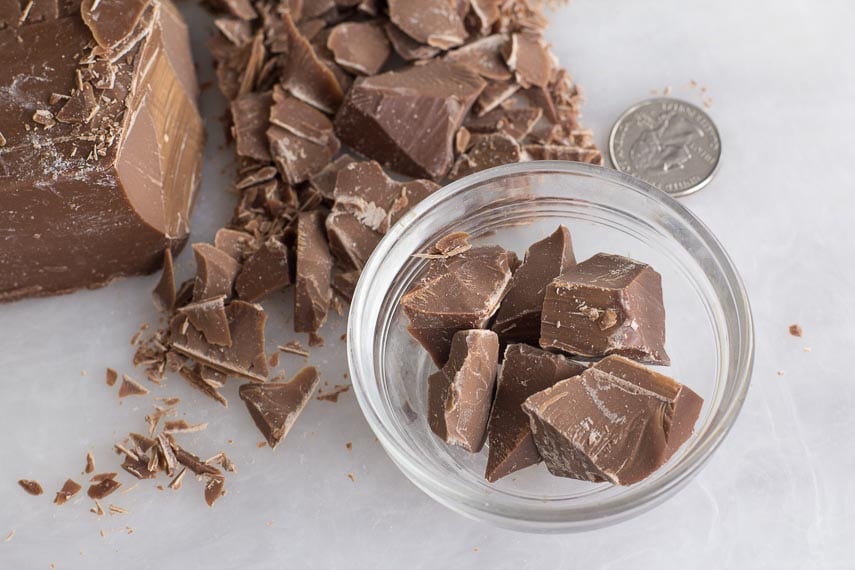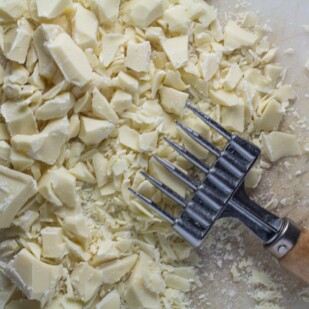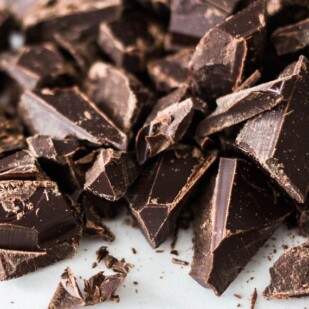If Milk Chocolate is Your Fave…
If you have read our All About White Chocolate, or All About Dark Chocolate you might know where this is going…YES you can eat milk chocolate on the low FODMAP diet!

Monash University Lab Tested Amounts of Milk Chocolate
You just have to stick with portion sizes. Monash recommends a 20 g (3/4-ounce) portion as appropriate for the Elimination Phase – due to the lactose.
Understand the Fine Print: Lactose is the Limiting Factor
The fine print in the Monash app has changed with the most recent updates. It now cautions that milk chocolate can be “high in saturated fat and/or added sugars, added salt or alcohol and low in fibre and/or protein.”
This is very confusing language. The natural fat in chocolate is cocoa butter. In milk chocolate there is the addition of dairy. Both cocoa butter and milk fat are a combination of saturated and unsaturated fat. None of the chocolate we have seen include salt or alcohol, and we are not looking to a chocolate treat for fiber or protein.
They do still include the language that existed before, which suggests that larger amounts of milk chocolate should be avoided IF you malabsorb lactose. If you do not malabsorb lactose, you could certainly try larger servings.
Not All Milk Chocolate Contains The Same Amount of Lactose
Also, as this article will explain, one milk chocolate might have much more or less lactose than another. “Darker” milk chocolates with higher cacao percentages might be tolerated in larger portions.
Monash has NOT reported what the cacao percentage was in the milk chocolate that they tested.
How Much Is 20 Grams?
Twenty grams might not sound like a lot but as the image below shows, that permissible amount is enough to satisfy.

You Can Eat Your Childhood Favorite Treats
In fact, you could eat classic, nostalgic Hershey’s Kisses, if you so desired! They’re not our choice for milk chocolate, but we understand the nostalgia value.
And apparently so do many others because Hershey’s churns out 70 million kisses per day! Someone is eating all that chocolate.
When you read a milk chocolate label it will, at the very least, list sugar, some percentage of cacao mass and some sort of milk product (skim milk, milk powder, etc.). There will most likely also be some sort of added fat, either cocoa butter or a vegetable oil, and possibly lecithin as an emulsifier and very often also vanilla or vanillin.
“Natural flavor” might be listed as well as something called PGPR, which is polyglycerol polyricinoleate, an emulsifier that is often used along with lecithin in lesser quality chocolate. It allows for less cocoa butter to be used – as it is n expensive ingredient.

As with any chocolate, dark, milk or white, we think you should buy the best that you can afford. This is an indulgence after all and we prefer a clean label.
We look for milk chocolates that only list cacao mass, sugar, cocoa butter, some sort of milk product and perhaps lecithin and true vanilla.
Check out our article on Halloween candy for info on all the holiday treats you can eat, and which you should steer clear of.
Try “Dark” Milk Chocolate with Less Lactose
It used to be that milk chocolate labels would pretty much always have sugar listed as the first ingredient, but these days you can find some that list the cacao mass first. These are dark chocolates that happen to have a dairy component.
They might even look like a dark chocolate, but given the inclusion of a good quantity of dairy, they are technically milk chocolates. They are like a dark and milk chocolate hybrid and worth a try.
They will typically have 40% and higher cacao mass, whereas the FDA allows a product to be called milk chocolate with as little as 10% cacao mass (Hershey’s Kisses are believed to contain about 30%, but have at times been described to contain as little as 11%). We love Valrhona Jivara (40%).
We have even tasted a 70%-er – Slitti Lattenero from Italy – which is a revelation. A good basic baking milk chocolate would be Callebaut from Belgium, which is about 33% cacao. Look for it in bulk form online or in specialty stores.
You might also be interested in our article, All About Cocoa.
Low FODMAP Recipes Featuring Milk Chocolate
- By the way, there is about 9.4 g of milk chocolate in each of our Milk Chocolate Chunk Cookies with Pecans and Candied Orange Peel – might as well start there!
- Ménage à Trois Cookies
- Cappuccino Rice Crispy Treats








I may have missed it in the article, but does milk chocolate contain fructans?
Thank you,
Beth
Monash’s chocolate lab tests are quite insufficient. We have no idea what chocolate they tested. A true milk chocolate would contain cacao mass, and therefore fructans and potentially GOS as well in large amounts, based on what both the Monash and FODMAP Friendly apps report.
DeDe,
That makes sense, about the cacao mass. But since the article and neither app mentions fructans, I thought maybe at the percent level milk chocolate is that it would not contain any, or maybe a trace, of fructans. I will test my tolerance with it and see how it goes.
Thank you for taking the time to respond. I appreciate it!
Beth
The Monash app mentions fructans in the Dark Chocolate entry.